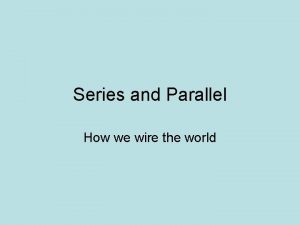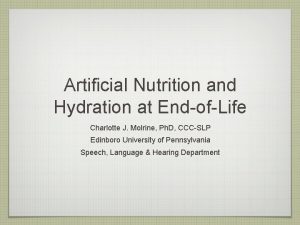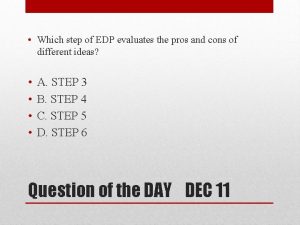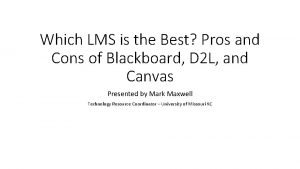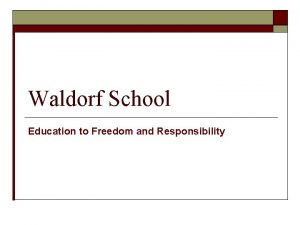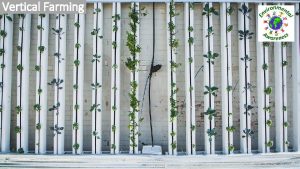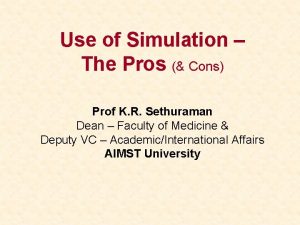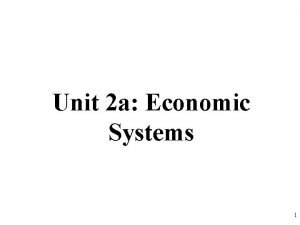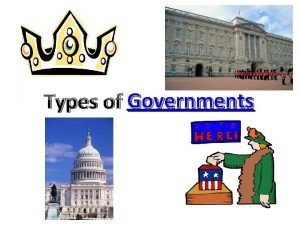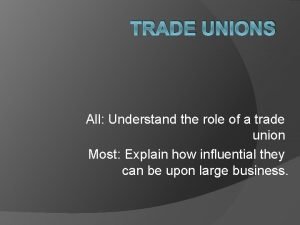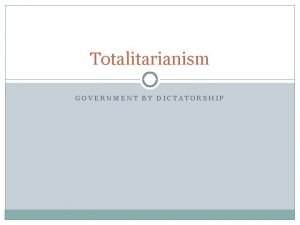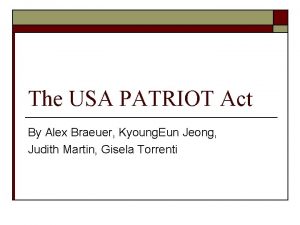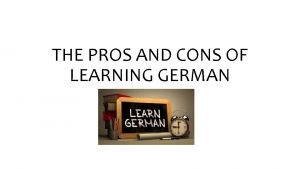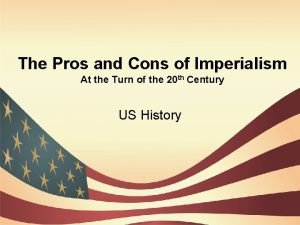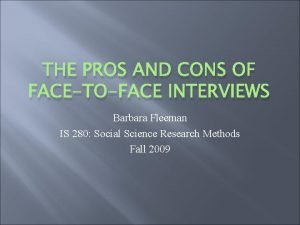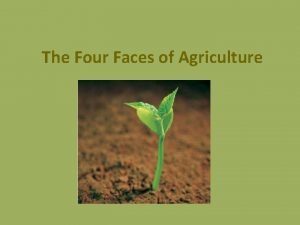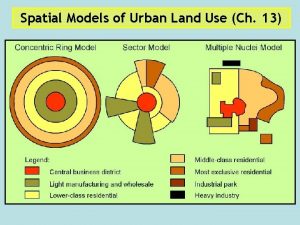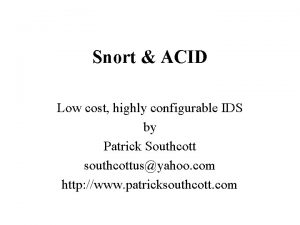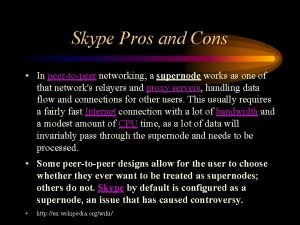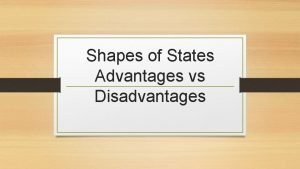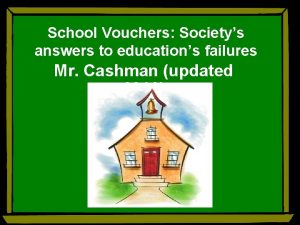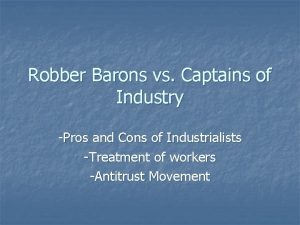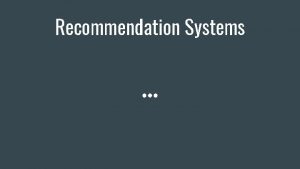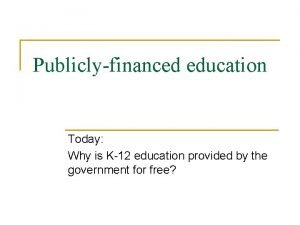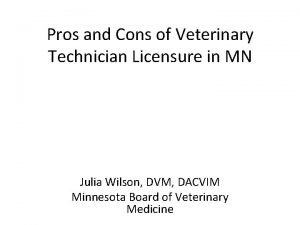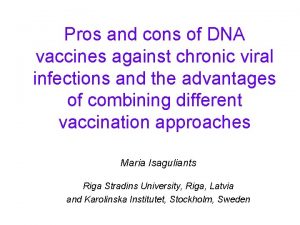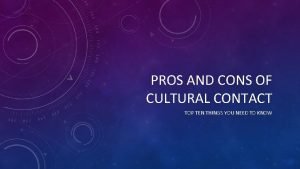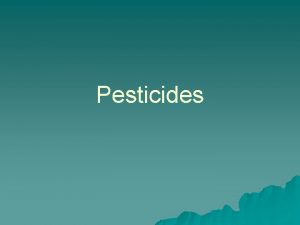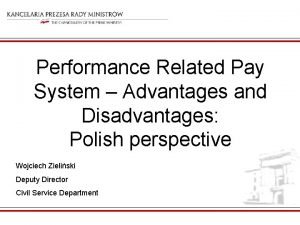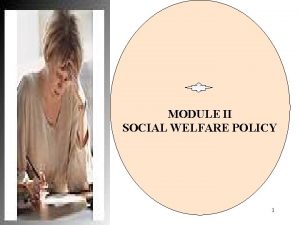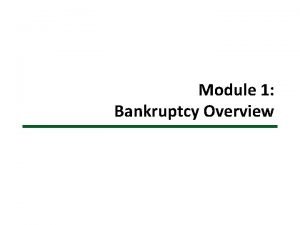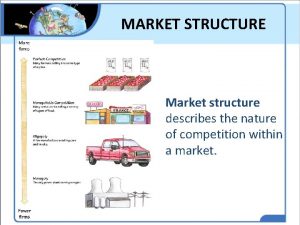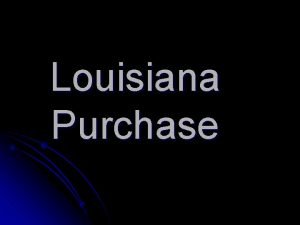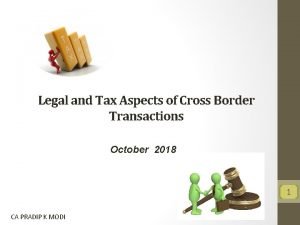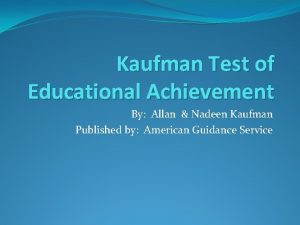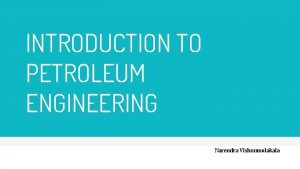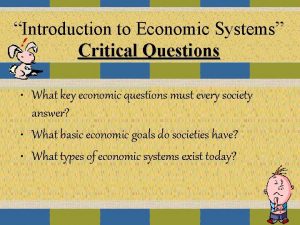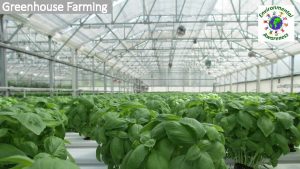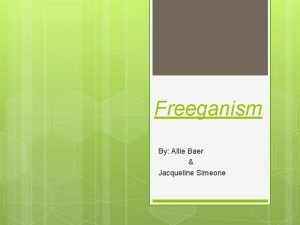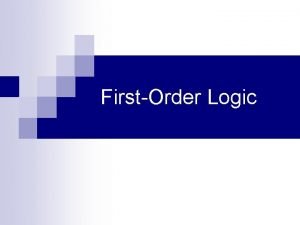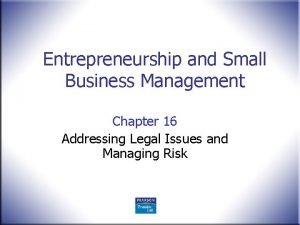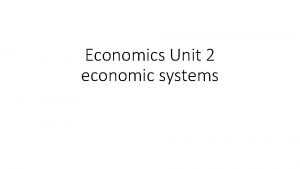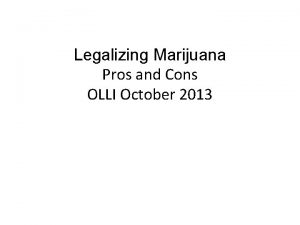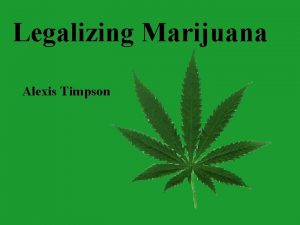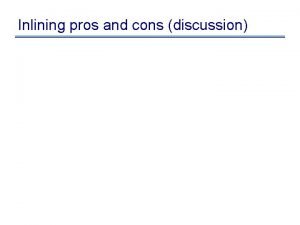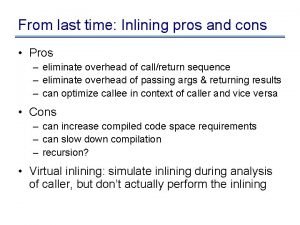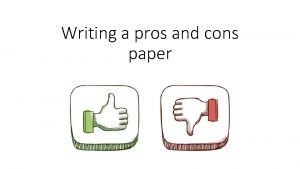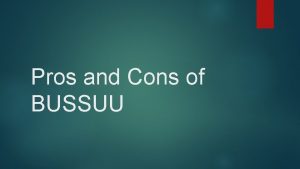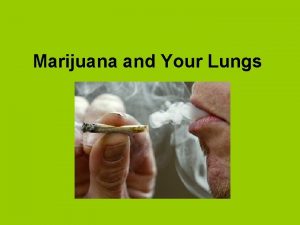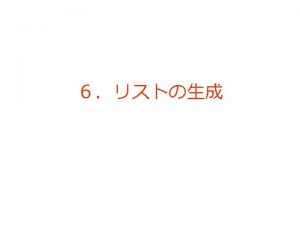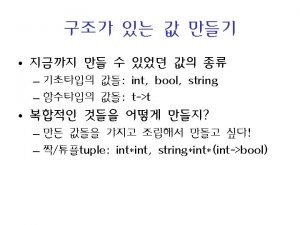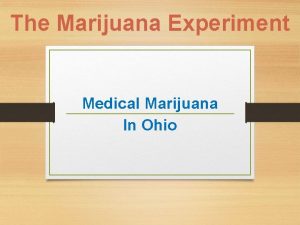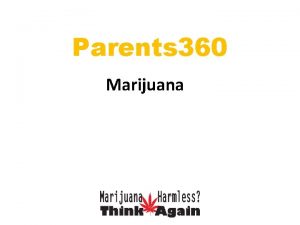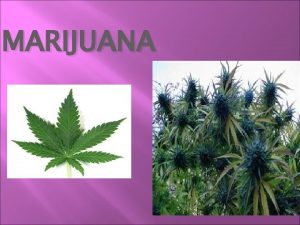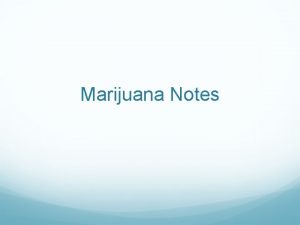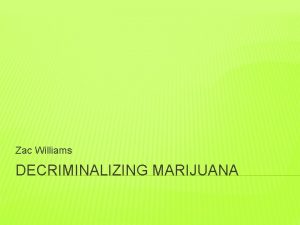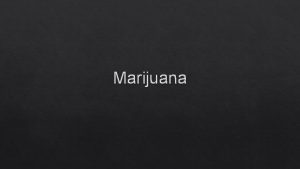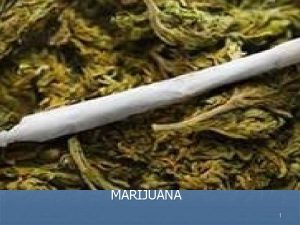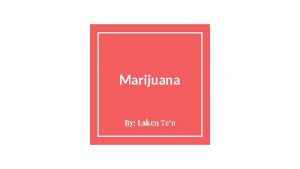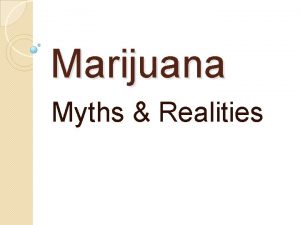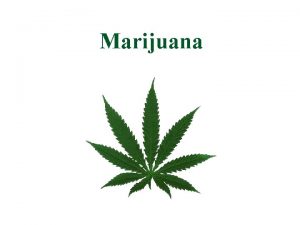Legalizing Marijuana Pros and Cons OLLI JANUARY 2013











































































- Slides: 75

Legalizing Marijuana Pros and Cons OLLI JANUARY 2013

Marijuana is the most commonly abused drug in the world. It is a dry, shredded green and brown mix of flowers, stems, seeds, and leaves derived from the plant Cannabis sativa and indica. The main active chemical in marijuana is delta-9 tetrahydrocannabinol, or THC for short. 2

3

4

5

6

7

Cost of a Joint of Marijuana Ø Christian Science Monitor: “High powered marijuana that now costs $300 an ounce could drop in price. July 2010. Ø Implications: A joint currently is worth $7. 50. One uses 250 – 750 mg of marijuana per joint. A pound will make 912 joints of 500 mg each. With a retail value of $4, 800 per pound for marijuana, you can sell the joints for $6, 840. 8

Get High for Free If pot were truly legal, joints would cost only a few cents Legal Pot would be amazingly cheap. Growth, distribution and marketing would be entirely different. Ø You have a nonperishable crop like wheat or lentils. Americas farmlands are some of the most productive in the world, thanks to large scale production technology. Ø Ø Ø Hemp, a non-drug form of sativa, production costs in Canada are now $500 per acre. So mid-grade commercial weed (cannabis that is 80 percent of the US market) could be as low as 20 cents per pound of smoke able material or joints could cost 25 cents. Joints could be given away for advertising like small packs of pretzels or peanuts. 9

Get High for Free 2 In practice recreational marijuana plants would likely be grown from transplanted clones like cherry tomatoes or asparagus. So costs would be $5, 000 to $20, 000 per acre. Costs of legal marijuana would be more like tea or tobacco or a few cents per joint. Ø Radically lowering the price to say $1. 00 per joint plus imposing a 20% tax would make pot the cheapest intoxicant on the market, absolutely blowing beer and liquor out of the water. Ø 10

Substances Ø Dope. Stats website provides information on a list of 302 drugs including alcohol, anise, ayahuasca, caffeine, catnip, cloves, cocaine, coffee, ether, ginger, ginseng, heroin, LSD, marijuana, methadone, nicotine, opium, poppies, sage, St. John’s wort, steroids, tobacco, and vitamins. 11

The War on Drugs Ø Most parents who support the war on drugs are mainly concerned about their children becoming addicted to drugs rather than simply become occasional or modest drug users. Ø Yet the war on drugs may increase addiction rates, and it may even increase the number of addicts. 12

Is Marijuana Dangerous? Ø Development of a Rational Scale to Assess the Harm of Drugs of Potential Misuse: Article in The Lancet 2007 United Kingdom. Ø This article by Blakemore and Nutt, et. al. , presents a scale of harms based on three scales – physical harm, dependence and social harm – which were independently assessed by two groups of experts from the fields of chemistry, pharmacology, forensic science, psychiatry and other medical specialties. Ø Substances with high physical harm scores include heroin, cocaine, barbiturates, ketamine, street methadone and amphetamines. Ø Substances with a high dependence or addictiveness include heroin, cocaine, tobacco, street methadone, barbiturates, alcohol and bendiaozepines (benzo). 13

14

15

National Institute Drug Abuse 5 year Harmfulness Perception Down Ø 2012 survey: HS seniors 6. 5% marijuana daily, 23% previous month, 36% previous year. Lower rates for 10 th and 8 th graders. Ø Link between early heavy use and IQ drop. 8 points. Learning and memory. Ø Impact physical and mental health, cognitive abilities, social life and career status. Early frequent use and tie to addiction. 16

The Truth About Marijuana Ø Short-Term Effects: sensory distortion, panic, anxiety, poor coordination of movement, lowered reaction time, after an initial “up” the user feels sleepy or depressed, increased heartbeat (and the risk of heart attack). Ø Long-Term Effects: Reduced resistance to common illnesses (colds, bronchitis, etc. ); suppression of the immune system; growth disorders; increase of abnormally structured cells in the body; reduction of male sex hormones; rapid destruction of lung fibers and lesions (injuries) to the brain could be permanent; reduced sexual capacity; study difficulties: reduced ability to learn and retain information and apathy. 17

Is Marijuana Dangerous? Ø Cannabis is a popular recreational drug around the world, only behind alcohol, caffeine and tobacco. In the United States alone, it is believed that over 100 million Americans have tried Cannabis, with 25 million Americans having used it within the past year. 18

Facts about Marijuana 1. Most marijuana users never use any other illicit drug. Most popular illegal drug today. Most users never try any other illegal drug. For the large majority, it is a terminus rather than a so-called gateway drug. 2. Most people who use marijuana do so occasionally. Fewer than 10 percent of those who try marijuana ever meet the clinical criteria for dependence, while 32 percent of tobacco users and 15 percent of alcohol users do. 19

Facts about Marijuana 2 3. Claims about increases in marijuana potency are vastly overstated. In addition potency is not related to risk of dependence or health impacts. THC in domestically grown marijuana is less than 5%. 1980’s was 3%. Doctors may legally prescribe Marinol, an FDA-approved pill that contains 100% THC effective for treatment of nausea, vomiting, and wasting disease. 4. Marijuana has not been shown to cause mental illness. Ingestion may cause panic, anxiety, and paranoia but effects are temporary. Distress may lead to use but not reverse. 5. Marijuana use has not been shown to increase risk of cancer. 20

Facts about Marijuana 3 6. Marijuana has been proven helpful for treating the symptoms of a variety of medical conditions. 7. Marijuana use rates in the Netherlands are roughly onehalf those in the U. S. despite very different policies of quasi -legalization versus prohibition. 8. Marijuana has not been shown to cause long-term cognitive impairment. Short term memory yes, duration of intoxication, long term permanent - lack of evidence. 21

Facts about Marijuana 4 Ø 9. There is no compelling evidence that marijuana contributes substantially to traffic accidents and fatalities. Ø 10. More than 750, 000 people arrested for marijuana each year, the vast majority for simple possession. 22

Is Marijuana Dangerous? Ø What are Americans telling us? Should marijuana be legalized? Ø Are the residents of one half of our states irrational? Ø Why are they approving medical marijuana? Why have Washington and Colorado legalized marijuana? Ø 23

24

Federal Legislation HB 689. The States’ Medical Marijuana Patient Protection Act, will protect medical users in states that have approved medical marijuana from prosecution under the Federal Controlled Substances Act. Marijuana reclassified as a Schedule II. Ø HB 710: The Truth in Trials Act, provides an affirmative defense in federal court for dependents in compliance with state medical marijuana laws. 25

Historic, Groundbreaking 'CRS' Report JAN 23, 2013 Ø Congress could consider options such as Ø (1) modifying mandatory minimum penalties, (2) expanding the use of Residential Reentry Centers, (3) placing more offenders on probation, (4) reinstating parole for federal inmates, (5) expanding the amount of good time credit 26

Drug War Argument Ø Most people can use most drugs without doing much harm to themselves or anyone else. Only a tiny few of the millions that have tried marijuana have gone on to have problems. Ø The same is true for cocaine and hallucinogens. That a few million people have serious problems is no reason to demonize these drugs and the people that use them. 27

Telling the Truth to Teens As compared to most drugs, Pot is the least dangerous. Pot is less addictive than coffee. Ø Beer causes the same memory loss as Pot. Marijuana enhances certain mental abilities, helps you think “outside the box”. Ø Don’t take Pot before a test! Ø Its your life! Be responsible! Learn how to say no and mean it. Ø The only reason Pot isn’t legal is because there a lot of people making money because it’s not legal. Drug abuse is a bad idea. 28 Ø

Who Opposes Legalizing Marijuana and Why Ø The Uniformed. The Government, Politicians afraid to act. Religion – fun is sin. Moralizers. People who do no drugs. Ø The Alcohol Lobby. The Tobacco Lobby. Ø Law Enforcement. Government Agencies. Ø Pot dealers. Wood Industry. Private Prisons. Trial Lawyers. Mental Hospitals. Conservatives(? ), Therapists. Ø I’d add international Cartels, domestic 29 producers.

30

United States Drug Use 2008 Past month, age 12 & over Ø Ø Ø Ø Substance Users (Millions) % Population* Drugs 20. 1 8. 0 Marijuana 15. 2 6. 1 Cocaine 1. 9. 7 Hallucinogens 1. 1. 4 Prescription-type 6. 2 2. 5 Alcohol 129. 0 51. 6 Tobacco 70. 9 28. 4 *Age 12 and over population Source: Results from the 2008 National Survey on Drug Use and Health: National Findings. 31

US Marijuana Use: Adults 18 and Older Ø Survey results suggest 100 million adults have used marijuana, including roughly half of those under age 50. Ø Whites comprise 68 percent of the population and 76 percent of those that have consumed marijuana at least once in their lifetime. Only 20 percent of those that have consumed are Hispanics or African-Americans which comprise 26 percent of the population. Ø Of the 26 million American adults (NSDUH) that have used marijuana this year, past studies suggest 37 percent use marijuana more than 100 times per year, which would imply there an estimated 9. 6 million chronic users, with almost half of these aged 18 -25. 32

Health Ø Most illegal drugs are not especially harmful (tobacco is more addictive than virtually all drugs). Most users of illegal drugs, including cocaine and heroin, take them only occasionally. They do so because they enjoy them (as they do whisky or a Marlboro light). Ø Addiction – impacts on families. Legalization offers the opportunity to deal and treat addiction properly. 33

Annual Causes of Death in the United States Ø Source: Journal of the American Medical Association. March 2004 Ø Tobacco 435, 000 Ø Alcohol 85, 000 Ø Adverse reaction to prescription drugs 32, 000 Ø Incidents involving firearms 31, 347* Ø Motor vehicle crashes 34, 485 * Ø An illicit drug use, direct and indirect 17, 000 Ø Non-steroidal anti-inflammatory drugs such as Aspirin 7, 600 Ø Marijuana 0 Ø *2009 data 34

Alcohol-Related Mortality Ø Alcohol-related deaths are now 1 in 25 around the world (3. 8%) and close to tobacco in overall impact. Alcoholrelated causes of death include accidents, violence, poisoning, mouth and throat cancer, breast cancer, suicide and many others. Ø In the United States, the Center for Disease Control estimates alcohol causes 25, 000 deaths a year. Overall, 100, 000 deaths occur each year because of alcohol consumption. Alcohol can be blamed for deaths from: 5% of circulatory system diseases, 15% of respiratory system diseases, 30% of accidents by fire and flames, 30% from accidental drowning, 30% of suicides, 40% of accidental falls, 45% of automobile accidents and 60% of homicides. 35

Tobacco-Related Mortality Ø More deaths are caused each year by tobacco use than by all deaths from human immunodeficiency virus (HIV), illegal drug use, alcohol use, motor vehicle injuries, suicides and murder combined. Ø Cigarette smoking causes about l of every 5 deaths in the United States each year. Ø Ø Malignant neoplasms (cancer) 160, 848 Cardiovascular diseases 128, 497 Respiratory diseases 103, 338 Grand Total 392, 683, including men 237, 406, women 155, 277 Ø Additional 49, 400 from secondhand smoke exposure. Ø For every person who dies from smoking, there are 20 people who have smoking- caused disease and disability 36

Drug-Related Deaths Ø According to the CDC some 39, 000 people suffered drug related deaths in 2006. About 90% of the deaths were classified as overdoses and most of the remainder were from damage to their organs due to long-term drug use. Ø This includes deaths from dependent and nondependent use of legal or illegal drugs, but also poisoning from medically prescribed and other drugs. Ø It excludes unintentional injuries, homicides and other causes indirectly related to drug use, as well as newborn deaths due to mothers’ drug use. Ø Researchers found a sharp increase in deaths tied to cocaine and to opioid analgesics, a class of drugs used medically for pain treatment that includes fentanyl, methadone, morphine and popular pain relievers like Vicodin and Oxycontin. 37

Drug-Related Deaths 2 Ø 2006 estimates: l Cocaine-related 7, 000. l Methadone-related 5, 000. l Other opioids 6, 000, including brand names such as Buprenex, Stadol, Tylenol with codeine, Duragesic, Vicodin, Dilaudid, Dolophine, Astramorph, Oxy. Contin and Darvon. l l In the general population, marijuana use is not associated with increased mortality. There is no record in the extensive medical literature describing a proven, documented cannabisinduced fatality. By contrast, Aspirin causes hundreds of deaths each year. 38

Public Health Care Cost Ø (2009) “The public health burden of cannabis use is modest compared with that of alcohol, tobacco, and other illicit drugs. Ø A recent Australian study estimated that cannabis use caused 0. 2% of total disease burden in Australia—a country with one of the highest reported rates of cannabis use. Ø Cannabis accounted for 10% of the burden attributable to all illicit drugs (including heroin, cocaine and amphetamines). It also accounted for around 10% of the proportion of disease burden attributed to alcohol (2 -3%), but only 2. 5% of that attributable to tobacco (7 -8%). ” 39

Results of the War on Drugs Nixon elected 1971. Expectation drug trafficking could be reduced. Cost is now over $2. 5 trillion, tallied up 45 million arrests and insurmountable damages to society. America is not now nor will ever be drug free. Ø Total direct monetary cost includes spending on police, court personnel, guards and other resources spent on imprisoning and punishing those convicted is now estimated at $40 billion per year. Ø 40

The War on Drugs 2 High school drop outs have remained large at 25%. High for black and Hispanic children in poor neighborhoods. Important factor in innercity neighborhoods is the temptation to drop out in order to profit from the drug trade. Ø Persons incarcerated in state and federal prisons has grown from 330, 000 in 1980 to about 1. 6 million today. Much of this increase is directly due to the war on drugs and severe punishments for persons convicted of drug trafficking. Total prisoners and jail inmates totaled 2, 239, 800 at 41 the end of 2011. Ø

42

43

The War on Drugs 3 About 50% of federal prisoners and 20% of state prisoners have been convicted of either selling or using drugs. Many minor prisoners find few opportunities for legal employment after they get out of prison and they develop better skills at criminal activities. Ø Prices of illegal drugs are pushed up whenever many drug traffickers are caught and punished harshly. Higher prices help compensate traffikers for the risks of being apprehended. Ø 44

The War on Drugs 4 High prices can discourage the demand for drugs. They enable traffickers to make a lot of money, to operate on a large scale, to ruthlessly eliminate competition, to form gangs and cartels in the U. S. , Mexico, Columbia, Brazil and other countries. Ø The paradox is the harder governments push the fight especially if they target small-fry dealers the larger the profits. More aggressive war on drugs lead to higher levels of violence and corruption and the higher the costs imposed on society. Ø 45

The War on Drugs 5 Ø The larger the profits the more the encouragement to bribe and intimidate police, politicians, the military and anyone else involved in the war against drugs. Anyone who resists begins to fear for their lives and those of their families. Ø Probably 60, 000 people have died since Mexico’s antidrug campaign started in 2006, magnitudes greater than American losses in Iraq and Afghanistan combined and proportionally three times as many as Vietnam. Many killed were innocent civilians and the army personnel, police officers and local government officials involved in the antidrug effort. 46

The War on Drugs 6 Ø Advocates claim the war reduces drug use and addiction. However this may well lead drug users to lower priced but more dangerous alcohol as drugs become more expensive. Ø It may be harder to break an addiction to an illegal drug. Addicts may be leery of going to clinics or to nonprofit “drugs anonymous” groups for help for fear they will be reported. Ø The illegality of drugs stunts development of ways to help addicts. It leads them to associate more with addicts and less with those who might help them quit. 47

Other Considerations Ø Joseph Mc. Namara, an active member of Law Enforcement Against Prohibition (LEAP) describes marijuana laws as much worse than ineffective: “they waste valuable police resurces and also create a lucrative black market that funds cartels and criminal gangs with billions of tax free dollars. ” Ø These officers, judges and prosecutors support legalizing marijuana because it: l Stops wasting police officers on non-violent marijuana offenders and enables them to focus on preventing violent crime. l Cuts off funding to violent gangs and drug cartels. l Reduces marijuana access to children by instituting strict agelimits and public safety controls. l Protects the lives of police officers now at risk in the “drug war, ” l Restores mutual respect and good relations between law enforcement and communities bearing the brunt of current marijuana laws. 48

Cannabis Imports Ø Information is very sparse, but one website with some credence (Cha Cha) indicates 15 to 20 percent of US marijuana comes from Mexico. Ø Another terminology is BC Bud or marijuana from British Columbia. Medical marijuana is generally allowed in Canada. The Provinces vary on enforcement of possession laws. The debate on legalization continues there. Some product is sent to the US illegally. It is considered to be of very high quality. Ø Overall adult lifetime prevalence of use of marijuana in Canada is the highest in the world based on 2005 information and in line with the United States and New Zealand. 49

Drug War Side Effect Ø Critics argue that one of the most pervasive drug scandals in the United States is the epidemic of undertreatment of pain. “Addiction” to (i. e. , dependence on) opiates among the terminally ill is the appropriate course of medical treatment. Ø Smoking marijuana to ease the nausea of chemotherapy, to reduce the pain of multiple sclerosis, to alleviate the symptoms of glaucoma and to improve appetite dangerously reduced from AIDS are effective medicine. Ø Users currently are regarded as criminals. Prohibition also prevents research on the medical use of marijuana. 50

Medical Uses of Cannabis Ø Dr. Andrew Weil, via the Huffington Post, Sept. 14 2010: Possible medical uses of cannabis is enjoying a renaissance. Ø In recent years studies have shown potential for treating nausea, vomiting, premenstrual syndrome, insomnia, migraines, multiple sclerosis, asthma, atherosclerosis, bipolar disorder, depression, Huntington’s disease, Parkinson’s disease, sickle-cell disease, sleep apnea, Alzheimer’s disease and anorexia nervosa. 51

Medicinal Uses of Marijuana: Pain Continued The report concluded that the following patient groups should be targeted for clinical studies of cannabinoids in the treatment of pain: l l l Chemotherapy patients, especially those being treated for mucositis, nausea and anorexia. Postoperative pain patients (using cannabinoids as an opioid adjunct to determine whether nausea and vomiting from opioids are reduced). Patients with spinal cord injury, peripheral neuropathic pain or central post-stroke pain. Patients with chronic pain and insomnia. AIDS patients with cachexia (wasting and malnutrition), AIDS neuropathy or any significant pain problem. 52

Marijuana Laws Virginia Ø Ø Possession Any amount (first offense) misdemeanor 30 days $500 Any amount (subsequent offense) misdemeanor 1 year $2, 500 Ø Cultivation Any amount felony 5 - 30 years $10, 000 Ø Ø Ø Sale 1/2 oz or less misdemeanor 1 year $2, 500 1/2 oz to 5 lbs felony 1 - 10 years $2, 500 5 lbs to 100 kg felony 5 - 30 years $2, 500 More than 100 kg felony 20 years MMS* $1, 000 To a minor felony 10 - 50 years $100, 000 Within 1, 000 feet of a school or other specified areas felony 1 - 5 years $100, 000 Transport 5 lbs or more into state with intent to sell felony 3 years MMS* - 40 years $1, 000 Ø *Mandatory minimum sentence. Ø Miscellaneous (paraphernalia, license suspensions, drug tax stamps, etc. . . ) Paraphernalia sale misdemeanor 1 year $2, 500 Paraphernalia sale to a minor felony 1 - 5 years $2, 500 Probation with deferred proceedings is possible for first offenders. Any marijuana conviction results in the suspension of ones drivers license for a period of six months. Ø Ø 53

DRUGS Virginia State Police 2008 Arrests and Offenses Reported Ø Ø “Crack Cocaine” 3, 646, Cocaine 2, 577, Heroin 771, Ø Marijuana 19, 911, Morphine 71, Opium 28, Other Narcotic 1, 139, LSD 7, PCP 45, Other Hallucinogens 58, Ø Amphetamines/Methamphetamines 312, Ø Other Stimulants 81, Barbiturates 23, Other Depressants 112, Other Drugs 622, Unknown Drug Type 3, 508. Ø Ø Ø Total Drug Arrests 32, 929. Drug Offenses Reported 46, 115. Age Range Under 10 one, 65 and over 91, peak age 19 = 2, 530. 54

Reform Legalize Drugs Ø Steadily eliminate the “War on Drugs” to one of taxation of drug sales and treatment of addicts along the same lines currently in place for tobacco and alcohol. Ø Decriminalize possession and use of marijuana and harder drugs including cocaine and heroin. Ø Utilize educational programs and counseling of youth regarding the medical aspects of drugs. Provide appropriate medical and additional support programs, community based treatment and access to approved quality controlled distributors for those that wish to use drugs. Make drugs available for medical use and treatment of pain. Ø Minimize incarceration as a punishment for possession of drugs. Legalize distribution of drugs through private sector outlets under government regulation and control. 55

Legalizing Ø Issue- fear that more people would take drugs under a legal regime. Not clear this would be the case but a cheaper, safer product, and more widely available product might result in some increase in consumption. Ø In Portugal, where use of drugs is considered a health problem, drug use is less than half what it is in the United States. In Holland, where drugs are legal, teen drug use is half of what it is in the U. S. Ø One researcher points out that roughly 30 percent of the U. S. drug market has been decriminalized in recent years and drug use has not increased in those states. Legalizing might result in drugs being substituted for alcohol consumption. Ø Providing honest information about health risks of different drugs and pricing them accordingly by governments can steer people toward the least harmful ones. It might encourage legitimate drug companies to improve designer drugs. 56

Drug Legalization Various Views Ø Legalization of drugs need not be viewed as a single giant step in which all restrictions are abruptly removed, resulting in a chaotic free market. Ø With alcohol the federal government retained some oversight and a remarkable degree of discretion was given to individual states. Ø Alcohol remains one of the most regulated products available, in terms of licensing, location, time, pricing, advertising and other respects. Similar liberalization— with taxation and other regulation—could be tried for other drugs…. 57

Drugs and Politics Ø Promise politicians love to make to assuage the sense of moral panic that has been the hand maiden of prohibition for a century. Intended to reassure parents of teenagers across the world. It is a highly irresponsible promise because it cannot be fulfilled. The war terrorizes the parents of teenagers that try a mild controlled substance that should be legal. Ø The war on drugs has been a disaster, creating failed states in the developing world as addiction has flourished in the rich world. 58

Drug Policy Ø The “least bad” policy is to legalize drugs. “Least bad” does not mean good. Many vulnerable drug-takers would suffer. But in the view of the Economist, more would , gain. Ø Governments would tax and regulate the drug trade, and use the funds (billions) saved on law enforcement to educate and treat. Sales to minors would be banned. Different drugs would command different levels of taxation and regulation. 59

Economics Ø Legal marijuana would substitute for alcohol consumption for adults which could have positive aspects for younger and for any recreational consumers. Ø Less binge drinking Ø Fewer alcohol related accidents. Some accidents with alcohol and marijuana but a lot more “sleeping it off” so lower accidents in total. 60

In Summary Ø Half a million people are behind bars on drug charges – more then western Europe (with a larger population) incarcerates for all offenses. The war on drugs has become a war on families, a war on public health and a war on constitutional rights. Drug Policy Alliance. Ø Public health problems like HIV and Hepatitis C are all exacerbated by zero tolerance laws that restrict access to clean needles. Children of inmates are at risk of educational failure, joblessness, addiction and delinquency. Ø People suffering from cancer, AIDS and other debilitating illnesses are regularly denied access to their medicine or even arrested and prosecuted for using medical marijuana. Ø We can do better. 61

INTERNATIONAL AGREEMENTS Ø The United States was a major force behind The Single Convention on Narcotic Drugs of 1961 and its amendment by the 1972 Protocol. The Convention on Psychotropic Substances of 1971 added cannabis to the list of controlled drugs. Ø The U. S and Sweden are proponents of zero tolerance policies on cannabis which has the effect of preventing the UN from promoting harm reduction policies like needle exchange and Heroin-assisted treatment. 62

U. S. Justice versus Europe Ø Fewer criminal zones in Europe. Violent offenders, terrorists, certain sex offenders and drug dealers. l l l l Very limited use of prison on property offenses. Increased use of fines, probation, and community service. Use of “day fine” system tailored to ability to pay and to degree of integration into society. Drug users do not find themselves in prison. Prostitution legalized in Northern Europe, procuring is not. Deviancy has been defined down. Special class of judges. Presupposes inmates will be released early, provide treatment toward re-socialization. Continental courts have grown stronger. 63

Historical Perspective Crime Ø Violent crime was not responsible for the quadrupling of the incarcerated population in the United States. . Violent crime rates had been relatively constant or declining for decades Ø The prison population was increased primarily by public policy changes causing more prison sentences and lengthening time served, e. g. through mandatory minimum sentencing, "three strikes" laws, and reductions in the availability of parole or early release. Ø These policies were championed as protecting the public from serious and violent offenders, but instead yielded high rates of confinement for nonviolent offenders. Nearly three quarters of new admissions to state prison were convicted of nonviolent crimes. Only 49 percent of sentenced state inmates were held for violent offenses. Ø Perhaps the single greatest force behind the growth of the prison population has been the national "war on drugs. " The number of incarcerated drug offenders has increased twelvefold since 1980. In 2000, 22 percent of those in federal and state prisons were convicted on drug charges. 64

U. S. Justice versus Europe Ø U. S. cultural roots. Suspicious of central government authority. Egalitarian social status— dislike of social hierarchy. Ø Procedural fairness but less respect for person. Christian/religious tradition. Ø American racism. Ø Degradation in punishment. 65

Crime Ø U. S. Crime Index has declined markedly from 1990 to 2009. As a result, there is less interest in enforcing laws related to hard drugs (heroin, cocaine) and other illegal drugs, primarily marijuana. Ø Far from reducing crime, prohibition has fostered gangsterism on a scale the world has never seen before. The illegal drug industry is worth $320 billion per year. 66

Drug Perspectives Ø Federal mandatory minimum drug sentences are extremely punitive. An extreme example is an offender who deals marijuana 3 times in one week. Each time he carries a handgun with him. If convicted his mandatory minimum sentence is 60 years. 67

Sentencing Project Report Ø While the nation celebrates a reported crime rate at a 40 year low it is instructive to note that despite the addition of more then 1. 3 million persons to the prison population (excluding jail inmates), crime rates are at the level (likely below) that they were at a time (1970) when the number of prisoners was just a fraction of the total today. 68

Inmate Population Ø It is estimated that three-fourths of the persons that are incarcerated have a history of drug/alcohol abuse. Ø One out of six have mental illness. Ø One-half the women have suffered sexual or physical abuse. Ø Prisoners predominately come from poor/working class communities. Ø Two-thirds are racial and/or ethnic minorities. 69

Incarceration Ø Nationally direct expenditures on corrections exceeded $68 billion for all levels of government in 2006, $98 billion for police and $46 billion for judicial functions. Ø As a share of total state general fund spending, corrections has grown from 5. 2 percent in 1988 to 6. 9 percent in 2006. Ø Ø Virginia spent $1. 136 billion in fiscal year 2007 on corrections. For every dollar spent on higher education, Virginia spent 60 cents on corrections. 70

Racism in Criminal Justice Ø Human Rights Watch 2008. Information from 34 states: l l Across the 34 states, a black man is 11. 8 times more likely than a white man to be sent to prison on drug charges, and a black woman 4. 8 times more likely than a white woman. In 16 states, African Americans are sent to prison at rates between 10 and 42 times the rates for whites. The 10 states with the greatest disparities in prison admissions for drug offenders are: Wisconsin, Illinois, New Jersey, Maryland, West Virginia, Colorado, New York, Virginia, Pennsylvania, and Michigan. 71

Racism in Criminal Justice Ø Nationally African Americans are 13 percent of drug users but 35 percent of arrests for possession, 55 percent of convictions, and 74 percent of convictions for drugs. Ø Easier to make arrests in open air inner city drug markets (blacks) then in suburban basements (whites). 72

“The New Jim Crow” Ø Book by Michelle Alexander, Professor of Law Ohio State. Argues “war on drugs” is really a new form of Jim Crow in modern times where overt racism is political suicide and race neutral talk has become the norm. Ø “War on drugs” has led to three of every four young black men in Washington, D. C. serving time in prison and in Chicago, 55% of the total black male population has a felony record. * l *Note need to check accuracy or basis of quotation 73

Race and American Punitiveness 3 Ø The Racial Resentment scale significantly predicted greater support for a more punitive approach toward crime and capital punishment. Racial animus is one of the most salient and consistent predictors of American punitiveness. Ø When added to other evidence, a prominent reason for the American public’s punitiveness—including mass imprisonment and the death penalty—is the belief that those disproportionately subject to these harsh sanctions are people they do not like: African American offenders. The “criminal other” become a polarizing force about crime and its control. 74

Drug Policy Alliance Ø Everyone has a stake in ending the war on drugs. Ø Whether you are a parent concerned about protecting children from perceived drug related “harm”, a social justice advocate worried about racially disproportionate incarceration rates or a fiscally conservative taxpayer you have a concern. Ø U. S. federal, state and local governments have spent hundreds of billions of dollars trying to make American “drug free”. Yet heroin, cocaine, methamphetamine and other illicit drugs including marijuana are cheaper, purer and easier to get then ever before. 75
 Marijuana pros and cons chart
Marijuana pros and cons chart Hub and-spoke system advantages and disadvantages
Hub and-spoke system advantages and disadvantages Pros and cons of compilers and interpreters
Pros and cons of compilers and interpreters Pros and cons of byod and cobo
Pros and cons of byod and cobo Pros and cons of series circuits
Pros and cons of series circuits Pros and cons of artificial nutrition and hydration
Pros and cons of artificial nutrition and hydration Objective and task method pros and cons
Objective and task method pros and cons How to start an essay about advantages and disadvantages
How to start an essay about advantages and disadvantages Trebuchet pros and cons
Trebuchet pros and cons Blackboard pros and cons
Blackboard pros and cons Waldorf pros and cons
Waldorf pros and cons Vjfs
Vjfs Vertical farming pros and cons
Vertical farming pros and cons Pros and cons of kinesthetic learning
Pros and cons of kinesthetic learning Histogram vs boxplot pros and cons
Histogram vs boxplot pros and cons Command economy pros and cons
Command economy pros and cons Pros and cons of thrust stage
Pros and cons of thrust stage Who governs a dictatorship
Who governs a dictatorship Pros and cons of trade unions
Pros and cons of trade unions Pros of dictatorship
Pros of dictatorship Usa patriot act pros and cons
Usa patriot act pros and cons Pros and cons of learning german
Pros and cons of learning german Cons of imperialism
Cons of imperialism Barbara cons
Barbara cons Disadvantage of solar energy
Disadvantage of solar energy Pros and cons of organic farming
Pros and cons of organic farming Direct method merits and demerits
Direct method merits and demerits Pros and cons of risk financing
Pros and cons of risk financing Suggestopedia adalah
Suggestopedia adalah Tableau pros and cons
Tableau pros and cons Multiple nuclei model cons
Multiple nuclei model cons Where is solution mining used
Where is solution mining used What are the pros of capitalism
What are the pros of capitalism Pros and cons of snort
Pros and cons of snort Skype reviews pros and cons
Skype reviews pros and cons What is sheltered instruction observation protocol
What is sheltered instruction observation protocol Advantages and disadvantages of perforated states
Advantages and disadvantages of perforated states School vouchers pros and cons
School vouchers pros and cons Pros and cons of running start
Pros and cons of running start Pros and cons of robber barons
Pros and cons of robber barons Gender-neutral housing pros and cons
Gender-neutral housing pros and cons Collaborative filtering pros and cons
Collaborative filtering pros and cons School vouchers pros and cons
School vouchers pros and cons Pros and cons of corporate personhood
Pros and cons of corporate personhood Pros and cons of zoning laws
Pros and cons of zoning laws Pros and cons of being a veterinary technician
Pros and cons of being a veterinary technician Fptp pros and cons
Fptp pros and cons Pros of cloning
Pros of cloning Virulent
Virulent Pros and cons of culture
Pros and cons of culture Inorganic pesticides pros and cons
Inorganic pesticides pros and cons Performance related pay advantages and disadvantages essay
Performance related pay advantages and disadvantages essay Pros and cons of angel investors
Pros and cons of angel investors Pros and cons of welfare
Pros and cons of welfare Pros and cons of bankruptcy
Pros and cons of bankruptcy Market structure
Market structure Louisiana purchase
Louisiana purchase Cross boarder transactions
Cross boarder transactions Kaufman test of educational achievement scores
Kaufman test of educational achievement scores Pros and cons of banking
Pros and cons of banking Investment bank functions
Investment bank functions Petroleum engineering pros and cons
Petroleum engineering pros and cons Command economy pros and cons
Command economy pros and cons Pros and cons of public housing
Pros and cons of public housing Advantages and disadvantages of greenhouse farming
Advantages and disadvantages of greenhouse farming What is the advantage and disadvantage of arranged marriage
What is the advantage and disadvantage of arranged marriage Research on the pros and cons of genetic engineering.
Research on the pros and cons of genetic engineering. Disadvantages of gagne's instructional events
Disadvantages of gagne's instructional events What is freeganism
What is freeganism Pros and cons of propositional logic
Pros and cons of propositional logic Advantages and disadvantages of projective tests
Advantages and disadvantages of projective tests Load bearing vest pros and cons
Load bearing vest pros and cons Sole proprietorship pros and cons
Sole proprietorship pros and cons Command economy pros and cons
Command economy pros and cons Charting by exception pros and cons
Charting by exception pros and cons District of innovation pros and cons
District of innovation pros and cons




